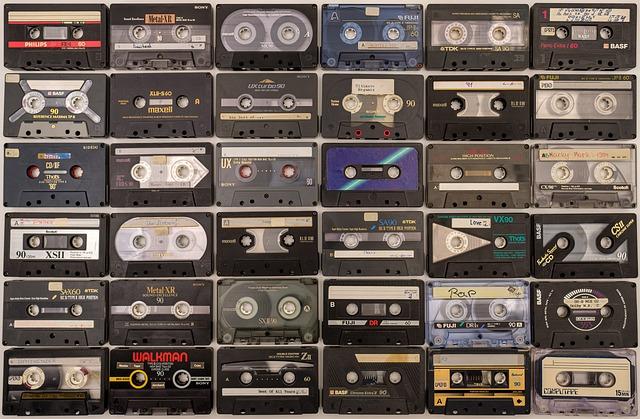In the dim glow of a theater, as the screen flickers to life, it’s not just the visuals that transport us to distant galaxies or bygone eras—it’s the sound that breathes life into these worlds. Welcome to the realm of sound design, where silence speaks as loudly as a crescendo and every footstep, whisper, and rustle is meticulously crafted to draw audiences into an immersive audio tapestry. This article delves into the intricate artistry behind cinematic soundscapes, unveiling the techniques and innovations that transform mere noise into an evocative symphony, guiding us through the unseen corridors of storytelling.
Crafting Atmosphere: The Role of Foley in Film
In the realm of sound design, Foley artists are the unsung heroes who bring films to life by creating the intricate tapestry of sounds that envelop viewers in a movie’s world. Unlike traditional sound effects, Foley sounds are recorded in real time, mimicking the actions seen on screen. This process involves a fascinating blend of creativity and precision, where every footstep, rustle, and clink is crafted to enhance the narrative.
- Footsteps: The rhythm and texture of footsteps can convey a character’s mood or urgency.
- Clothing Rustle: Subtle swishes of fabric add realism to character movements.
- Prop Handling: Every clink of a glass or rustle of paper is meticulously recreated.
By manipulating everyday objects, Foley artists transform ordinary sounds into extraordinary auditory experiences. The meticulous attention to detail ensures that each sound seamlessly integrates into the visual story, creating a world where audiences feel as though they are walking alongside the characters, immersed in the film’s atmosphere.

The Art of Silence: Utilizing Quiet to Enhance Drama
In the realm of sound design, silence is a powerful tool that can amplify the emotional impact of a scene. While it may seem counterintuitive, the absence of sound can create a tension that words or music often cannot. Silence allows the audience to breathe, to reflect, and to anticipate. It is in these quiet moments that viewers are drawn deeper into the narrative, their senses heightened, ready for what comes next.
Sound designers use silence strategically to craft memorable experiences. Consider these techniques:
- Contrast: Juxtaposing silence with sudden noise can jolt the audience, enhancing dramatic effect.
- Focus: Removing background noise shifts attention to subtle details, like a character’s breath or a creaking floorboard.
- Emotion: Silence can convey a range of emotions, from tranquility to tension, allowing the audience to project their own feelings onto the scene.

Mixing Magic: Balancing Layers for Maximum Impact
In the realm of sound design, the art of mixing is akin to weaving a tapestry of auditory elements that captivate and engage the audience. Achieving this requires a meticulous balance of layers, each contributing to the story’s emotional depth. Sound designers often start with a foundation, such as ambient noise or a musical score, and build upon it with dialogue, sound effects, and other auditory textures.
- Dialogue: This is usually prioritized to ensure clarity, but it must blend seamlessly with other layers.
- Music: Sets the mood and enhances emotional beats, carefully balanced to complement rather than overshadow.
- Sound Effects: From footsteps to explosive action, these add realism and dynamism.
- Ambient Sounds: Background noises that enrich the setting, providing context and immersion.
Each layer is meticulously adjusted, with equalization and panning techniques ensuring that no single element dominates the auditory space. The ultimate goal is to create a cohesive soundscape that transports the audience, allowing them to experience the narrative in a deeply immersive way.

From Script to Screen: Collaborating with Directors for Sonic Vision
The journey from script to screen is a symphony of collaboration, where sound designers and directors weave together a tapestry of auditory experiences. This partnership is crucial in translating the director’s vision into a sonic reality. At the heart of this collaboration is the understanding of the narrative’s emotional core, which guides the sound designer in crafting an audio landscape that resonates with audiences.
Sound designers often start by immersing themselves in the script, identifying key moments where sound can enhance storytelling. Working closely with directors, they explore various auditory elements, such as:
- Ambience: Crafting the environment’s mood to match the film’s tone.
- Dialogue: Ensuring clarity and emotional depth through meticulous editing.
- Foley: Creating realistic sound effects that blend seamlessly with on-screen actions.
- Music: Collaborating with composers to integrate a score that complements the narrative arc.
Through this dynamic process, sound becomes a powerful storytelling tool, shaping the viewer’s experience and leaving a lasting impact.

